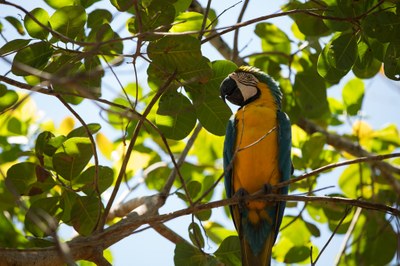Day of the Amazon - 5th September
When the Province of Amazonas was created 170 years ago on September 5th, the forest was an unknown and mysterious place. The date was chosen to mark the Day of Amazon in Brazil. With the highest biodiversity in the world and responsible for 20% of all its fresh water, the Amazon is essential to the balance of the global climate.
In this context, the Partnership for Conservation of Amazon Biodiversity (PCAB) brings together civil society organizations, private sector, traditional communities cooperatives and associations, research institutions and government on projects that help preserve the forest.
The PCAB aims to ensure the integrity and conservation of the Brazilian Amazon ecosystem over the next 20 years, as well as improve the well-being and socioeconomic status of rural and traditional communities living in the Amazon region. Learn more about some of those stories:
- The Pirarucu is one the largest freshwater fishes in the world. An endangered species, it is bouncing back thanks to the monitoring efforts of Amazon communities. Its controlled fishing helps to generate income to its protectors.
- Patrícia Costa, from the quilombola Community of Alto Pirativa in Amapá travelled all the way to California for the Geo for Good Summit in 2019. She went to share her experience taking part in the mapping of quilombola communities at her home state. The social economic data collected will help improve the management of quilombola lands by identifying the most pressing needs. The research is part of the Sharing Worlds Program and was published earlier this year.
- Supporting entrepreneurs that help conservation is essential to create new development opportunities in the Amazon. That’s why USAID supports the Partnership Platform for the Amazon’s Acceleration Program, which invests in startups that help protect the forest.
- To ensure biodiversity protection, the communities that share its space must be included in conservation efforts. The Participatory Biodiversity Monitoring Project does just that by supporting communities that live in and around Conservation Units to keep track of biodiversity health.


